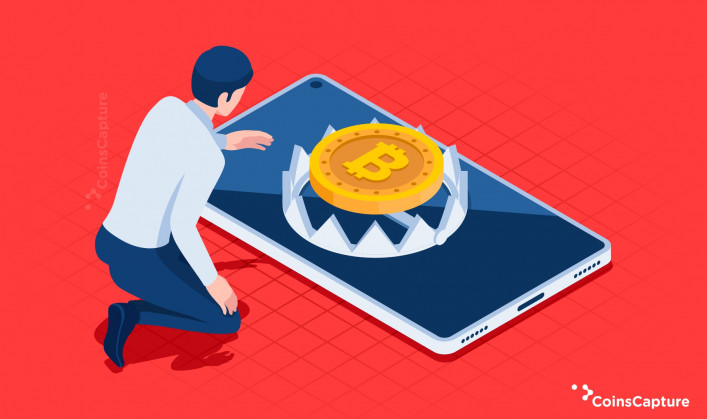7 November 2025
How to Calculate Risk-Reward (RR) Ratio in Crypto Trading?
Learning how to invest or trade successfully takes time. To fully grasp as well as perfect all of the subtleties involved often takes many years. Along the process, you'll pick up a variety of skills useful for portfolio administration, upkeep, and expansion. Successful investors often use risk management as one of their most potent tools. The Risk to Reward Ratio is a vital instrument in the arsenal of the Risk Manager. The risk-reward ratio is a tool for determining whether or not a potential investment or transaction is worth pursuing. You can even use it in your Cryptocurrency Trading.
Also Read: FTX Vs Crypto.Com: Which Is Better?
What is the Risk-Reward Ratio?
The risk/reward ratio, commonly written as R/R ratio is a statistic that contrasts the possible gain with the potential loss of a transaction. It is determined by segmenting the risk or the distance from the trade's entry point to the stop-loss order by the reward or the distance from the profit objective to the trade's entry point. By comparing the possible gain or reward of a transaction to the risk of making a loss, the risk/reward ratio may be utilized to determine whether or not to enter into the transaction. When making a deal, the trader draws two lines to determine the potential loss to gain ratio and the potential gain to risk ratio. Stop-loss orders are used to calculate risk.
Also Read: 8 Finest Crypto Margin Trading Exchanges Compared In 2022
How to Calculate Risk-Reward Ratio?
The calculation of RR in Crypto Trading is very simple. You just need to determine using the following formula: Possible Investment Loss = Risk-Reward Ratio (Possible Profit from the Investment). Let's pretend you're anticipating a 50% increase in the price of bitcoin and are willing to invest $40,000, with a Stop Loss of $35,000. Therefore, you stand to lose $5000, or $35,000 (Sell Price) minus $40,000, if the BTC price drops and your stop loss is activated (Buy Price). Therefore, the investment's potential loss is $5000. In addition, if the Bitcoin price were to increase to $50,000, we would be in a very different situation. You'd make a profit of $10,000, or $50,000 (selling price) less $40,000 (Buy Price). Thus, the potential gain from the investment is $10,000. This means that the potential gain is $25,000 if the risk is $5,000.
Having a predetermined profit goal in mind is what constitutes the reward. At this stage, the transaction to sell the securities has taken place. The potential benefit from the transaction is the reward. This is the starting point minus the desired profit. The risk split by the potential payoff is known as the RR ratio. Whereas if the ratio is higher than 1.0, the possible loss in a deal outweighs the possible gain. In a ratio lower than 1, the potential gain exceeds the possible loss.
How to Use Risk-Reward Ratio for Crypto Trading?
The RR may be broken down into two categories and it includes: the Investor's RR or the Expected Risk and the Investment's RR or the Actual Risk.
1. Investor’s RR (Expected Risk)
Something which a shareholder is ready to endure in terms of a ratio. There is always a chance of loss with each and every investment. What this ratio indicates is the amount of risk an investor is willing to assume in exchange for the potential return on investment. Any given Ratio may be affected by the preferences of the individual shareholder.
2. Investment’s RR (Actual Risk)
These are the true investment risks. The preceding instance provides an example of a determined Risk-Reward ratio. Thus, the investor may contemplate making a purchase if the perceived risk is lower than the potential loss. Nonetheless, if the investor determines that the Actual Risk is lower than the Expected Risk, he or she will not make the investment. Let's say John's Risk-Reward Ratio is 1:1. He was given a business proposition and is currently debating how much to invest. His decision to accept or decline the investment must be based on the investment's Risk Reward Ratio. Therefore, he will think about it if the investment has a Risk-Reward Ratio of 1:3 or less than 1:2.
How the Risk/Reward Ratio Works?
When acting alone, it is preferable to make deals with smaller potential losses. This is because the opportunity for gain is larger than the danger of failure. For this to be effective, though, the risk-to-reward ratio need not be very less. The odds of success for a trade are higher when the risk is less than the potential profit. The average risk-to-reward ratio for a daily trader is 0.25%. Stop-loss orders should be set at reasonable levels when calculating the potential loss and gain of a transaction. Then, after doing the necessary research and planning, set a reasonable profit goal. The selection of such tiers shouldn't be arbitrary. Once the stop-loss as well as take-profit levels have been determined, you will have a better idea of the trade's potential risk and return.
The Bottomline
Incorporating the Risk-Reward Ratio (RR) into your investing plan is as simple as using this formula. Furthermore, we realize that you may avoid getting your hands burned if you learn to manage your portfolio risks properly.
Disclaimer: The author’s thoughts and comments are solely for educational reasons and informative purposes only. They do not represent financial, investment, or other advice.






